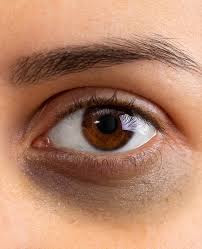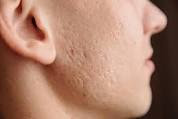**Beneath the Surface: Understanding and Conquering Under Eye Dark Circles**
Under eye dark circles, often shrouded in misconceptions and frustrations, are a common cosmetic concern that plagues individuals of all ages and skin types. While not typically indicative of a serious medical condition, dark circles can impact self-confidence and prompt a quest for solutions. In this enlightening blog, we'll delve into the causes, contributing factors, treatment options, and preventive measures for under eye dark circles, empowering you to conquer this common cosmetic concern with confidence.
**Unveiling the Causes of Under Eye Dark Circles:**
Under eye dark circles can result from a combination of genetic, environmental, and lifestyle factors. Some common causes and contributing factors include:
1. **Genetics:** Genetic predisposition plays a significant role in the development of under eye dark circles. Inherited traits such as skin tone, skin thickness, and vascular structure can contribute to the prominence of dark circles.
2. **Thin Under Eye Skin:** The skin under the eyes is thinner and more delicate than skin elsewhere on the face, making it more prone to discoloration and visible blood vessels. Thin under eye skin can exacerbate the appearance of dark circles, particularly as we age and collagen production declines.
3. **Pigmentation Changes:** Hyperpigmentation, or an overproduction of melanin, can lead to the darkening of under eye skin. Factors such as sun exposure, hormonal changes, and post-inflammatory hyperpigmentation can contribute to pigmentation changes and dark circle formation.
4. **Vascular Issues:** Dilated blood vessels and poor circulation around the eyes can result in the appearance of dark circles. Thin under eye skin may make blood vessels more visible, leading to a bluish or purplish discoloration commonly associated with vascular dark circles.
5. **Fatigue and Sleep Deprivation:** Lack of sleep, fatigue, and exhaustion can cause blood vessels to dilate and become more visible, leading to the appearance of dark circles. Additionally, sleep deprivation can impair lymphatic drainage and exacerbate fluid retention, further contributing to under eye puffiness and discoloration.
**Identifying the Different Types of Under Eye Dark Circles:**
Under eye dark circles can manifest in various forms, each with its own unique characteristics and underlying causes. Some common types of under eye dark circles include:
1. **Pigmented Dark Circles:** Pigmented dark circles are characterized by brown or tan discoloration of the under eye skin. These dark circles often result from excess melanin production and may be exacerbated by factors such as sun exposure, hormonal changes, and post-inflammatory hyperpigmentation.
2. **Vascular Dark Circles:** Vascular dark circles, also known as blue or purple dark circles, are caused by visible blood vessels beneath the thin under eye skin. These dark circles may appear bluish or purplish in color and are often associated with factors such as genetics, thin under eye skin, and poor circulation.
3. **Mixed Dark Circles:** Mixed dark circles are a combination of pigmented and vascular dark circles, resulting in a multifaceted appearance with both brownish discoloration and visible blood vessels. Mixed dark circles may be more challenging to treat due to their complex nature and underlying causes.
**Exploring Treatment Options for Under Eye Dark Circles:**
While under eye dark circles may be challenging to eliminate entirely, several treatment options can help reduce their appearance and improve skin tone and texture. Some common treatment options for under eye dark circles include:
1. **Topical Treatments:** Over-the-counter and prescription topical treatments containing ingredients such as retinoids, vitamin C, hydroquinone, and kojic acid can help reduce hyperpigmentation and improve skin tone and texture. These treatments may be applied directly to the under eye area as part of a daily skincare regimen.
2. **Cosmetic Procedures:** Cosmetic procedures such as chemical peels, microdermabrasion, and laser therapy can help improve under eye skin texture, reduce hyperpigmentation, and enhance collagen production. These procedures are typically performed by dermatologists or skincare professionals and may require multiple sessions for optimal results.
3. **Dermal Fillers:** Injectable dermal fillers containing hyaluronic acid or other biocompatible substances can help plump and hydrate the under eye area, reducing the appearance of hollows and shadows associated with dark circles. Dermal fillers are injected beneath the skin by trained healthcare professionals and can provide immediate and long-lasting results.
4. **Platelet-Rich Plasma (PRP) Therapy:** PRP therapy involves extracting and concentrating platelets from the patient's own blood and injecting them into the under eye area to stimulate collagen production and improve skin texture and tone. PRP therapy can help reduce the appearance of dark circles and rejuvenate the under eye skin with natural-looking results.
**Preventive Measures and Lifestyle Strategies:**
In addition to treatment options, adopting preventive measures and lifestyle strategies can help minimize the risk of developing or exacerbating under eye dark circles. Some tips for preventing and managing under eye dark circles include:
1. **Get Adequate Sleep:** Prioritize sleep and aim for seven to nine hours of quality sleep each night to allow for optimal skin repair and regeneration. Establish a consistent sleep schedule and create a relaxing bedtime routine to promote restful sleep.
2. **Manage Stress:** Practice stress management techniques such as meditation, deep breathing exercises, and mindfulness to reduce stress levels and promote overall well-being. Chronic stress can impair skin barrier function and exacerbate under eye dark circles.
3. **Protect Your Skin:** Use a broad-spectrum sunscreen with an SPF of 30 or higher to protect the delicate under eye skin from harmful UV radiation. Wear sunglasses with UV protection to shield the eyes from sun damage and minimize squinting, which can contribute to the formation of fine lines and wrinkles.
4. **Stay Hydrated:** Drink plenty of water throughout the day to keep the skin hydrated and promote optimal skin health. Dehydration can accentuate the appearance of dark circles and contribute to under eye puffiness and dullness.
5. **Eat a Balanced Diet:** Maintain a balanced diet rich in fruits, vegetables, lean proteins, and healthy fats to provide essential nutrients for skin health and vitality. Incorporate antioxidant-rich foods such as berries, leafy greens, and nuts to combat oxidative stress and promote skin radiance.
**Conclusion:**
Under eye dark circles may be a common cosmetic concern, but they need not overshadow your confidence and self-esteem. By understanding the causes, types, treatment options, and preventive measures for under eye dark circles, you can take proactive steps to manage and minimize their appearance.
Call now
on our Mobile 8669086098 to book an appointment
Kindly visit our website Derma Solutions to know more.
#darkcircles #under_eye_dark_circles #pigmentation_changes #prp #hyperpigmentation




Comments
Post a Comment